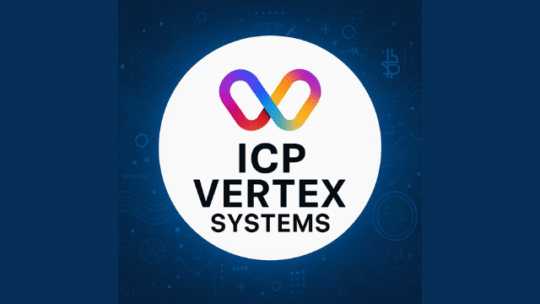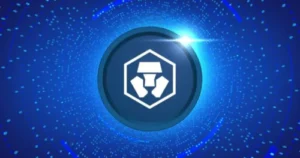RWA Asset Technology icp’s decentralized Vertex is changing how physical assets work in decentralized ecosystems. The Internet Computer (ICP) has become a leading platform that tokenizes physical assets through its decentralized Vertex System, with a market value of approximately $3.24 billion.
Blockchain and AI tech are reshaping the way companies manage and secure RWA assets. More than 140 Web3 + AI projects studied this technology merger by late 2022. This created new ways to recover assets and improve security protocols. The DFINITY Foundation’s collaboration with SingularityNET launched a decentralized AI program that shows RWA tech’s growing capabilities.
This piece will help you understand ICP’s Decentralized Vertex System in 2025. You will learn about its architecture and ground applications. The content covers threshold cryptography that protects your assets and cross-chain interoperability features. You will also see how major institutions use these systems to tokenize real estate and commodities.

Table of Contents
Vertex System Overview and Role in RWA Asset Technology
The Vertex System combines decentralized computing with real-life asset management on the Internet Computer Protocol (ICP). Vertex brings together ICP’s unique technology’s—serverless compute model, boosted orthogonal persistence, and AI-powered code generation. These elements create what developers call the “dawn of the Self-Writing Internet”. This system changes how physical assets work with blockchain tech.
Decentralized Architecture of the Vertex System
ICP’s distinctive subnet infrastructure powers the Vertex System through multiple blockchain instances that work in parallel. 13 to 40 geographically distributed nodes make up each subnet and run consensus algorithms independently. This design gives exceptional fault tolerance and maintains decentralization through architectural, political, and logical dimensions.
The Vertex ecosystem’s nodes run specialized software called “replica” with essential protocol components. The system uses “deterministic decentralization” to assign nodes to subnets. This maximizes diversity among operators, locations, and jurisdictions. Node providers need governance approval before network participation to ensure quality hardware and accountability. These providers earn ICP tokens as rewards for their computing resources.
Integration with Internet Computer Protocol (ICP)
Smart contracts (called “canisters”) deploy to subnets and copy across all subnet nodes in ICP’s framework. The Vertex System uses WebAssembly (Wasm) as its virtual machine. Developers can write applications in JavaScript, TypeScript, Rust, Python, or Motoko.
Chain-key cryptography powers the system’s distinctive capabilities. Each subnet keeps a fixed public key while nodes share the private key through secret shares. Nodes sign messages together without any single point having the complete private key. This substantially improves security for RWA assets.
The Network Nervous System (NNS) handles governance as a decentralized autonomous organization on ICP. Community members stake ICP tokens in neurons and get voting power. This ensures they retain control over the network’s operation.
Support for Real World Asset (RWA) Tokenization
The Vertex System turns tangible and intangible assets into tokenized digital representations. Traditional assets like real estate, art, equity shares, and commodities move onto the blockchain. ICP’s canister smart contracts manage these tokens and embed complex rules such as:
- Automated dividend distribution for fractional owners
- Voting rights management for tokenized shares
- Royalty payments for creative assets
- Instant settlement of ownership transfers
MercX showcases the Vertex System’s potential by focusing on tokenizing financial instruments and real-world assets on ICP. This creates a secure, transparent environment for asset management that uses ICP’s native features.
The Vertex System’s decentralized nature solves key limitations of traditional asset markets. ICP makes high-value investments available to broader audiences through fractional ownership. The tokenization process adds liquidity to static assets like real estate and streamlines transactions that once needed many intermediaries. The immutable ledger architecture keeps transparent records of all asset transfers and ownership changes, which builds trust among market participants.
Core Components of the Vertex System in 2025
The Vertex System’s technical foundation in 2025 rests on three basic components. These components let users manage ground assets securely on the Internet Computer Protocol. Together, they create a reliable system for RWA asset tech.
Threshold Cryptography for Secure Asset Control
Threshold cryptography serves as the life-blood of asset security in the Vertex System. Traditional digital signatures use a single private key to sign transactions. The threshold signatures take a different approach. They split the private key into multiple shares and distribute them across different nodes. No single entity has the complete private key, which makes the system much safer.
ICP puts this into practice through an advanced threshold signature scheme:
- The system never stores the secret signing key in one place, which removes weak points
- Different machines within a subnet hold secret shares
- The system needs a minimum number of these shares to create a valid signature
- Nodes share new key parts regularly, which makes old shares useless
This setup works great with rwa asset recovery scenarios. The system signs transactions to external networks like Bitcoin through threshold signing. Each node adds its key share to sign the transaction together. The complete private key never comes together in one place. This keeps everything secure even if some nodes fail.
The Vertex System supports both threshold ECDSA and threshold Schnorr signature schemes. The Schnorr implementation works with Bitcoin’s Taproot features and Ed25519-based protocols. This means the system can handle more types of assets.
ICRC-1 and ICRC-2 Token Standards for RWA Assets
RWA asset tokenization needs standard token protocols. Internet Computer Request for Comments (ICRC) standards create a common framework to make and record token transactions.
ICRC-1 provides basic standards for fungible tokens. It defines general ledger functions that every token must have. The standard stays simple by leaving out advanced functions. Users can add these through extensions.
ICRC-1 token metadata helps users through fields like:
icrc1:symbol: The token’s currency codeicrc1:name: The token’s full nameicrc1:decimals: Decimal precision used by the tokenicrc1:fee: Default transfer fee
ICRC-2 builds on ICRC-1 and adds extra functions needed for complex RWA operations. On top of that, new standards for RWA management will include:
- ICRC-122: Privileged minting and burning operations
- ICRC-123: Freezing and unfreezing accounts/principals
- ICRC-124: Pausing, unpausing, and deactivating ledgers
These standards focus on block formats rather than specific APIs. This ensures everything works together while giving developers freedom in implementation.
Smart Contract Modules for Asset Issuance and Redemption
Smart contracts (called “canisters” in ICP) run the main functions for RWA asset management. These WebAssembly modules work differently from regular smart contracts.
Canisters have orthogonal persistence. They keep their state between runs without extra coding. This makes it easier to build complex RWA systems that need reliable asset state tracking.
Canisters handle asset issuance and redemption by:
- Creating unique IDs for each tokenized asset
- Keeping detailed ownership and transfer records
- Running complex business rules for asset redemption
- Talking directly to external systems through HTTPS outcalls
Canisters offer two storage types: Wasm memory (up to 6GiB) and stable memory (up to 500GiB). Stable memory stays intact during upgrades, making it perfect for important RWA data.
ICP’s unique design allows autonomous execution through timers and heartbeats. This enables scheduled tasks like dividend payments or compliance checks. The system’s chain-key crypto lets canisters sign and submit transactions on other blockchains directly. Assets move between chains smoothly without middlemen.
Cross-Chain Interoperability and Asset Bridging
Chain-key tech makes it easy to move RWA assets between blockchain ecosystems without the usual network barriers. The Vertex System’s ability to work across chains reshapes how tokenized real-world assets work in multiple blockchain environments.
ckBTC and ckETH Support in RWA Transfers
Chain-key Bitcoin (ckBTC) and Chain-key Ether (ckETH) are the foundations for cross-chain RWA transfers. These tokens don’t rely on third-party bridges. They are cryptographically backed 1:1 by their original counterparts on native blockchains.
The tokens follow ICRC standards—ckBTC uses ICRC-2 while ckETH follows ICRC-1. This standardization works well with ICP’s smart contract ecosystem and keeps the ground value intact. These tokens bring several benefits:
- You get finality in seconds instead of minutes or hours on native chains
- Transaction fees are about two orders of magnitude lower than Bitcoin network fees (0.0000001 ckBTC or about 10 satoshis)
- You can verify all token activities on the chain
The system works through specialized canisters. A minter handles the minting and burning of tokens while a ledger tracks account balances and transactions. Users who deposit BTC or ETH receive an equal amount of chain-key tokens. The tokens burn and release native assets during withdrawals.
Bridging Real World Assets to Ethereum and Bitcoin
The Vertex System creates direct bridges between RWA assets and major blockchains without middlemen. ICP’s chain fusion lets smart contracts interact directly with external blockchains, which makes this possible.
Tokenized real estate, commodities, and other physical assets can now move freely between ecosystems. ICP smart contracts can own assets on multiple blockchains at once through network integration, RPC connections, and HTTPS outcalls.
The security approach is different from regular bridges. This removes many weak points that affected cross-chain protocols. Assets stay cryptographically secure during transfers. Threshold signatures make sure no single entity has control of the private keys.
Orbit DAO Integration for Multi-chain Governance
Orbit provides the tools to manage RWA assets across multiple blockchains. Organizations can now govern both digital assets and smart contracts across different ecosystems securely.
Internet Identity handles authentication while multisignature features create flexible security policies. This solves complex governance challenges that RWA portfolio managers face with different protocols.
Orbit now supports ICP and ICRC-1 tokens. Support for ETH, ERC-20, and Bitcoin tokens is coming soon. The platform creates one place where:
- Teams can set specific permissions for participants
- Workflows ensure compliance requirements are met
- Recovery features protect against poor management
- Cross-chain operations stay secure
Direct multi-chain governance is still in development. Developers can add features by connecting custom smart contracts to external blockchains. They can also use Orbit to authorize cross-chain operations.
User and Developer Experience with the Upgraded ICP Dashboard
The ICP Dashboard acts as your main hub to monitor and manage RWA assets throughout the Internet Computer ecosystem. A major upgrade in May 2025 brought specialized tools that make RWA asset tech user-friendly for developers and users alike.
New Ecosystem Token Pages for RWA Tracking
The dashboard started with chain-key tokens (like ckBTC) and Service Nervous System (SNS) tokens. Now it has an expanded ecosystem tokens section. This new interface lets you track detailed data about your RWA assets:
- Price information from multiple sources
- Transaction volumes of tokenized assets
- History of each RWA token’s activity
- Token insights that show market movements with onchain stats
You’ll find both financial and technical data on the token tracking page. This gives you a complete picture of asset performance without jumping between tools.
Aggregated Views for RWA Projects and Subnets
The latest dashboard unites all essential information about nodes, projects, and principals in one place. This means you can:
Look at RWA projects from all angles, with transactions, participants, and growth metrics on a single screen. The update announcement shows this helps newcomers learn the ecosystem better by linking related data points.
The subnet page shows technical performance metrics and RWA tokens running in each subnet. You’ll see an interactive map of node machine locations and a sortable table of canisters within that subnet.
Improved Search and Navigation for Asset Discovery
A fresh interface makes it easier to explore subnets, projects, and tokens. Better search tools help you find any token, principal, canister, or SNS quickly by name or ID.
This improved navigation helps a lot with RWA asset recovery. The homepage displays trending decentralized applications, popular tokens, and upcoming events. This gives you a quick overview of network activity.
These improvements mark just the start of planned updates to support Internet Computer’s growing RWA ecosystem.
Real-World Use Cases and Institutional Adoption
The Vertex System has driven widespread adoption of tokenized real-life assets in sectors of all sizes. This technical framework helps reshape the scene of traditional markets through blockchain integration.
Tokenized Real Estate and Commodities on ICP
Real estate stands as the main focus of RWA tokenization on Internet Computer. Market potential looks substantial, with projections that show tokenized real estate could reach $4 trillion by 2035, growing from less than $0.30 trillion in 2024. The St. Regis Aspen Resort in Colorado led the way in property tokenization. ICP canister smart contracts now manage these tokens and embed ownership rules like automated dividend distribution for fractional owners.
Commodity tokenization has also gained momentum. ICP ranks sixth among platforms that support RWA tokenization and stands out for its tamper-proof asset management capabilities. Small investors now have opportunities to join markets that were not available through traditional methods.
Compliance and KYC Integration via Internet Identity
Internet Identity acts as the authentication backbone for regulatory compliance in the RWA ecosystem. Developers can use this system to:
- Gate access without collecting sensitive personal information
- Connect with 2.5 million existing identities and 100,000 monthly active users
- Use W3C verifiable credentials standards
- Apply WebAuthn to improve security
Projects can add automated KYT (Know Your Transaction) screening, emergency controls for suspicious assets, and geographical restrictions to meet regulations. This framework meets the growing need for KYC/AML integration while staying true to decentralization principles.
Enterprise-Grade Asset Management with Orbit
Orbit delivers strong infrastructure to manage tokenized assets. The DFINITY Foundation’s platform offers secure multi-user governance across blockchain ecosystems. Its smart contract-based approval system blocks unauthorized access through flexible policies and multi-approver mechanisms.
Native support exists for ICP and ICRC-1 tokens, with ETH, ERC-20, and Bitcoin support coming soon. Financial institutions value Orbit’s detailed audit logging, disaster recovery features, and granular permission controls – everything needed for enterprise RWA management.
Final thought
The Decentralized Vertex System stands as a breakthrough foundation for RWA asset tech on the Internet Computer Protocol. This system combines threshold cryptography, standardized token frameworks, and advanced smart contract modules to build a secure ecosystem that tokenizes physical assets. The cross-chain capabilities let assets move smoothly across blockchain networks without middlemen or security risks.
ICP’s approach is substantially different from traditional tokenization methods. Chain-key cryptography makes sure no single entity controls the asset’s private keys. Orthogonal persistence makes it easier to develop complex RWA systems. This gives both people and institutions the chance to join markets they couldn’t access before through fractional ownership and lower entry barriers.
The new dashboard experience tackles day-to-day needs of asset tracking and management. Users get powerful tools to monitor their investments with search features, combined views, and detailed token pages. Internet Identity integration meets regulatory needs while staying true to decentralization principles.
Market projections show tokenized real estate could hit $4 trillion by 2035, which shows this tech’s huge potential. Platforms like Orbit drive enterprise adoption and prove the Vertex System works well beyond theory.
RWA asset tech on ICP bridges traditional finance and decentralized systems. Users now have better liquidity, clear record-keeping, and programmable asset features that weren’t possible in traditional markets. The Vertex System isn’t just an upgrade – it completely reimagines how ground assets work in digital ecosystems.
🚀Ready to embark on your crypto journey?💰🔒Secure, simple and rewarding – Crypto.com is your gateway to the future of finance!🌐💎Click here 👉👇to begin your adventure in the crypto universe today
🚨DISCLAIMER🚨Investingcrypto717.com 🌐 content is solely educational🎓. NOT financial advice🙅♂️💼. Do your own research🔍💡, consult a professional before investing💼🤝. You invest at your own risk⚠️💸. #NotFinancialAdvice #InvestingCrypto717🔐🌍




